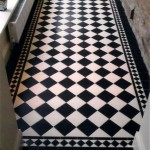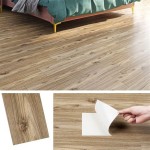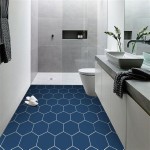Porcelain Tile For Kitchen Floors
Porcelain tiles are a timeless choice for kitchen floors, offering durability, easy maintenance, and a wide range of design options. These tiles are made from fine-grained clay and fired at extremely high temperatures, creating a dense and non-porous material that resists chipping, cracking, and moisture penetration. Here's a comprehensive guide to porcelain tile for kitchen floors, covering its benefits, types, installation, and maintenance:
Benefits of Porcelain Tile for Kitchen Floors
1. Durability: Porcelain tiles are incredibly durable, with a high resistance to wear and tear, making them ideal for high-traffic areas like kitchens. They can withstand heavy foot traffic, spills, and accidental drops, maintaining their pristine appearance over time.
2. Water Resistance: Porcelain tiles are non-porous, making them highly resistant to water absorption. This characteristic prevents stains from liquids, spills, and moisture, ensuring that your kitchen floor remains hygienic and easy to clean.
3. Stain Resistance: The impervious nature of porcelain tiles makes them resistant to staining. They will not absorb spills or liquids, preventing discoloration and ensuring a clean and fresh look for your kitchen floor.
4. Hygienic: Porcelain tiles are non-porous, which means they do not harbor bacteria, mold, or mildew. This makes them a hygienic choice for kitchens, reducing the risk of bacterial growth and promoting a healthy environment.
5. Easy Maintenance: Porcelain tiles are extremely easy to clean and maintain. Regular sweeping or vacuuming, followed by mopping with a damp mop, will keep your porcelain kitchen floor looking its best. Avoid using harsh chemicals or abrasive cleaners, as these can damage the tiles' surface.
6. Aesthetic Versatility: Porcelain tiles come in a vast array of colors, patterns, and finishes, providing endless design possibilities for your kitchen floor. From classic white subway tiles to intricate mosaic designs, there's a porcelain tile to suit every style and preference.
Types of Porcelain Tile for Kitchen Floors
1. Glazed Porcelain Tiles: Glazed porcelain tiles have a hard, glossy surface that is resistant to scratches and chipping, making them an excellent choice for kitchen floors. The glaze also adds color and pattern to the tiles, creating endless design possibilities.
2. Unglazed Porcelain Tiles: Unglazed porcelain tiles do not have a glazed surface, resulting in a more natural, matte finish. They are highly durable and less slippery than glazed tiles, making them suitable for areas with spills and moisture, such as kitchens with islands or sinks.
3. Textured Porcelain Tiles: Textured porcelain tiles have a slightly raised or uneven surface, providing additional traction and reducing the risk of slips and falls. They are ideal for kitchens with high foot traffic or areas prone to spills.
4. Large Format Porcelain Tiles: Large format porcelain tiles, typically 12" x 24" or larger, create a seamless and modern look for kitchen floors. They reduce the number of grout lines, making cleaning easier and giving the illusion of a more spacious kitchen.
Installation of Porcelain Tile for Kitchen Floors
Installing porcelain tiles requires professional expertise and adherence to proper techniques to ensure a durable and visually appealing floor. The typical installation process involves preparing the subfloor, applying mortar, laying the tiles, grouting the joints, and sealing the tiles.
Proper subfloor preparation involves ensuring that it is level, dry, and free of any debris. Mortar is then applied to the subfloor using a notched trowel, and the tiles are pressed into the mortar. Grout is applied to fill the joints between the tiles and create a smooth, seamless surface. Finally, a sealant is applied to protect the tiles from stains and moisture.
Maintenance of Porcelain Tile for Kitchen Floors
Maintaining porcelain tile for kitchen floors is relatively straightforward and requires minimal effort. Regular sweeping or vacuuming will remove loose dirt and debris. For a deeper clean, mop the floor with a damp mop using a mild cleaning solution designed for porcelain tiles. Avoid using harsh chemicals or abrasive cleaners, as these can damage the tiles' surface. It is also important to reseal the tiles periodically to maintain their protective coating and prevent staining.
By following these tips, you can ensure that your porcelain tile kitchen floor remains beautiful and durable for years to come. Its timeless appeal, ease of maintenance, and wide range of design options make porcelain tile an excellent choice for creating a stylish and functional kitchen space.

Best Tile For Kitchen Floor How To Make The Right Choice Welcome Rubi Tools Blog

5 Things To Consider When Selecting Kitchen Floor Tile

Which Is Better For Kitchen Flooring Porcelain Tile Or Ceramic Lx Hausys

5 Reasons To Choose Porcelain Tile Atlas Concorde Usa

Classic Kitchen Forge Grey Stone Effect Porcelain Tiles Contemporary Hertfordshire By Quorn Houzz

Porcelain Tiles How Do You Use Them In Your Singapore Home

Kitchen Floor Tile Ideas 2024 Marble Systems Supplier Travertine Granite

The Complete Guide To Kitchen Floor Tile Why

Kitchen Floor Tile Flooring Architessa

Porcelain Tiles Large White Bathroom Wall Floor Kitchen 1200x600








